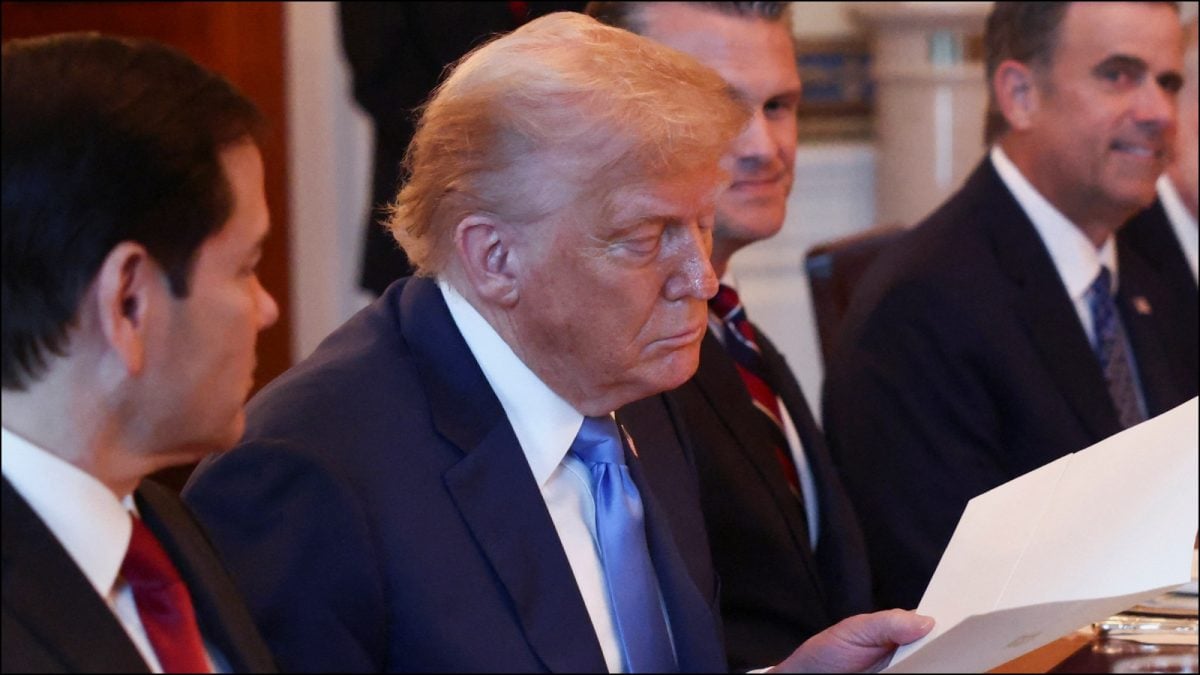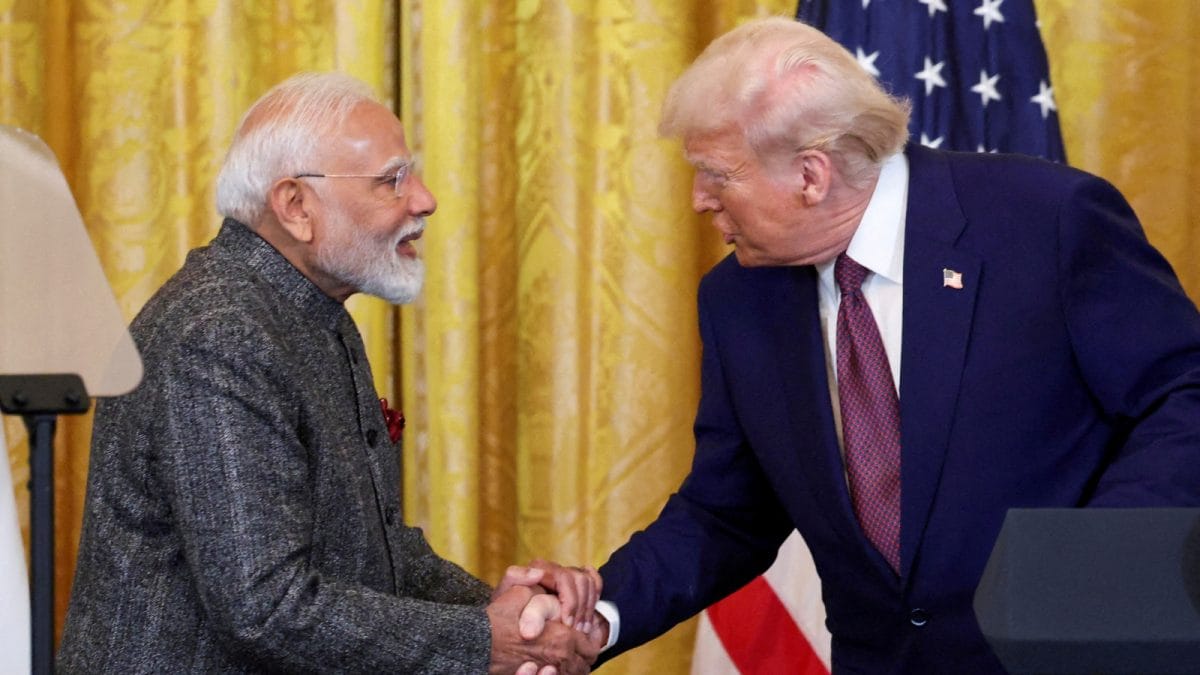ARTICLE AD BOX
Last Updated:July 04, 2025, 16:41 IST
Cleared by the Senate and narrowly passed in the House, the ‘One Big, Beautiful Bill’ is set to be signed into law over the July 4 weekend by President Donald Trump

'Big Beautiful Bill' is scheduled to be signed into law by President Trump at 5 pm Eastern Time on Friday. (Reuters Image)
A massive and controversial piece of legislation backed by US President Donald Trump has just cleared both houses of the American Congress. Officially called the One Big, Beautiful Bill Act, this nearly 1,000-page law brings together major tax changes, welfare cuts, defence spending hikes, and cultural policy shifts rolled into a single package.
The bill first cleared the US Senate in a 50–50 tie, with Vice President JD Vance casting the tie-breaking vote, and was later passed by the House of Representatives with a narrow 218–214 margin. It is scheduled to be signed into law by President Trump at 5 pm Eastern Time on Friday.
But what is actually inside this so-called “Big, Beautiful Bill"? Why is it controversial? And should India be paying attention?
What Is This Bill Trying To Do?
In simple terms, the bill is a one-stop legislative overhaul that aims to permanently extend Trump’s 2017 tax cuts, reduce spending on federal welfare programmes like healthcare and food assistance, increase defence and border security budgets, and push through several conservative social policy changes.
This is not a routine budget bill, it’s a broad ideological statement. Trump has long wanted to hardwire certain policies into US law, and this bill is designed to do just that.
The core idea is to reduce the size of government in areas like welfare and climate programmes, while boosting its role in areas like national security and immigration control.
What Changes For Americans?
The ‘One Big, Beautiful Bill’ permanently extends the tax cuts that Trump had introduced in 2017 during his first term. These cuts lowered income tax rates for individuals and businesses and were originally set to expire in 2025. By locking them in, the bill ensures that wealthier Americans and large corporations continue to benefit from lower taxes. While lower-income households could see an effective decline in income as cuts to safety net programs outweigh modest tax relief, according to analysts quoted by news agency Reuters.
It also introduces new tax deductions—for example, on tips earned by service workers, overtime wages, interest on car loans (provided the vehicle was assembled in the US), and some expenses related to elder care. A new savings tool called the “Trump Account" has been introduced as well. These accounts are designed to allow parents to invest in their children’s future, with gains exempt from federal taxes—similar in concept to tax-saving mutual funds or education-linked deposits in India.
To compensate for the loss in tax revenue, the bill slashes spending on key welfare programmes. Medicaid, a public health insurance programme for low-income Americans, will now have stricter eligibility requirements. The federal food stamp scheme—officially known as SNAP—will also be trimmed. Subsidies for solar energy, electric vehicles and other clean technologies are being rolled back.
The bill also reduces funding under Obamacare (the Affordable Care Act), especially for reproductive healthcare services, something that’s expected to trigger court challenges. On the cultural side, the bill limits funding for diversity and inclusion programmes in schools and universities.
The bill allocates an additional USD 300 billion—split equally between the Pentagon and the Department of Homeland Security—for military upgrades and enhanced border enforcement.
According to estimates by the Congressional Budget Office (CBO) —an independent US agency that provides non-partisan analysis to lawmakers— the bill is expected to add $3.4 trillion to the nation’s $36.2 trillion debt.
The same CBO analysis projects that changes to Medicaid eligibility and federal healthcare funding could result in up to 10.9 million people losing health insurance coverage over the coming years.
Why Is It Being Called ‘Big’ And ‘Beautiful’?
The name comes from Donald Trump himself, who described it as “one big, beautiful bill that will fix everything" during a rally earlier this year. It’s not an official legislative name, but the label stuck, partly because of its dramatic scope, and partly because Trump turned it into a campaign slogan.
What Are The Political Stakes?
The passage of the bill marks a significant legislative moment for the Trump administration. It consolidates several core policy priorities—tax cuts, reduced welfare spending, increased defence funding, and stricter immigration control—into one comprehensive law.
Democrats attempted to delay the vote, with House Minority Leader Hakeem Jeffries delivering an eight-hour speech in protest. “The focus of this bill, the justification for all of the cuts that will hurt everyday Americans, is to provide massive tax breaks for billionaires," he said.
A small number of Republican lawmakers also raised objections, mainly over the projected increase in the fiscal deficit. However, the bill ultimately passed along party lines in both chambers.
President Trump is scheduled to formally sign the bill into law at 5 pm Eastern Time on Friday (2:30 am IST on Saturday), during the Fourth of July weekend, which marks American Independence Day. The timing is significant because July 4 is a major national holiday in the US, often used by sitting presidents to deliver key speeches or highlight major achievements. Signing a large, ideologically driven bill during this weekend allows the administration to present it as a patriotic milestone and a fulfilment of campaign promises.
Does The Bill Affect India?
While the bill is entirely domestic in scope, it could have limited and indirect consequences for India.
For one, Indian IT and pharma companies that work with the US healthcare sector may face headwinds if American hospitals and insurers reduce spending in response to Medicaid cuts.
In the clean energy space, the US rolling back subsidies for electric vehicles and solar tech may weaken momentum for collaboration with Indian firms. Over the past few years, India and the US have explored joint work on battery storage, green hydrogen, and solar R&D—initiatives that now may see reduced push. The US pulling back on clean energy subsidies could also affect its broader commitments to global climate finance, where India has been a beneficiary and partner under several multilateral initiatives.
On the other hand, the sharp increase in US defence spending could open new opportunities for India–US defence partnerships, especially in co-production or advanced tech transfers under the iCET framework.
While the bill does not change US visa laws, its overall tone on immigration and the significant increase in funding for border enforcement may eventually lead to tighter scrutiny of work visa holders, including Indians on H-1B and L-1 categories.
What Happens Next?
Once President Trump signs the ‘Big, Beautiful Bill’ into law, different parts of it will be rolled out gradually over the coming months. Some changes—such as tax provisions—may take effect in the next financial year, while others, like new Medicaid rules or education policy shifts, will require implementation by individual states and federal agencies.
Politically, the bill is expected to play a major role in shaping public debate ahead of the 2026 midterm elections in the US. It provides the Trump administration and Republican Party with a major legislative achievement to campaign on, while also galvanising opposition from Democrats and civil society groups.
From India’s perspective, there is no immediate policy impact, but the bill will be closely monitored by government and industry, especially in sectors linked to US trade and regulation—such as IT services, pharmaceuticals, clean energy, and skilled migration.

Karishma Jain, Chief Sub Editor at News18.com, writes and edits opinion pieces on a variety of subjects, including Indian politics and policy, culture and the arts, technology and social change. Follow her @kar...Read More
Karishma Jain, Chief Sub Editor at News18.com, writes and edits opinion pieces on a variety of subjects, including Indian politics and policy, culture and the arts, technology and social change. Follow her @kar...
Read More
- Location :
- First Published:
News explainers What Is Donald Trump’s ‘Big, Beautiful Bill’ And Why It’s Making Headlines | Explained



.png)
.png)
.png)
















 3 days ago
10
3 days ago
10









 English (US) ·
English (US) ·